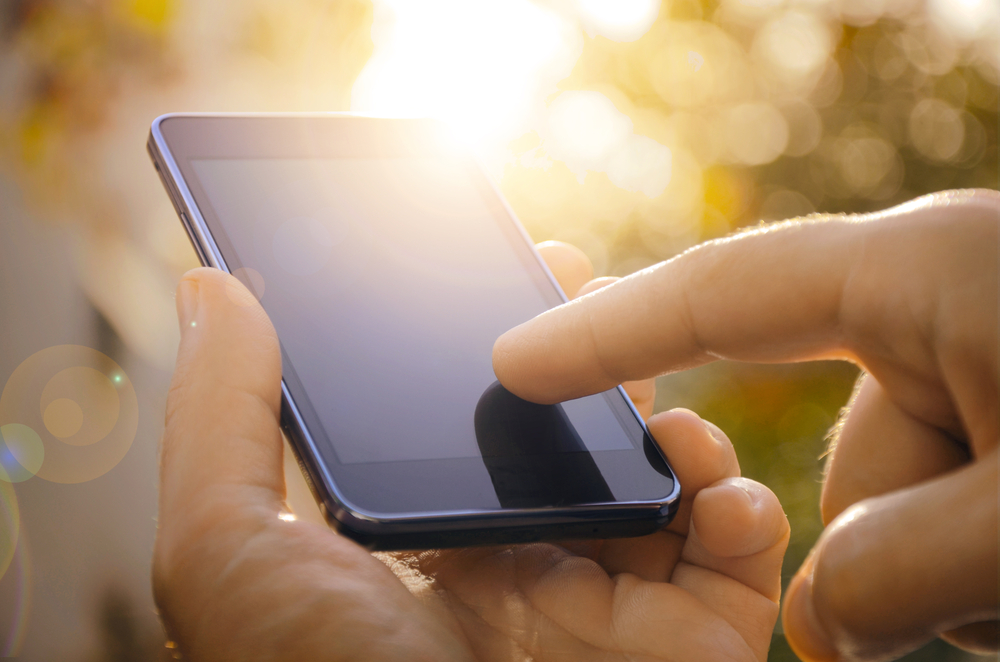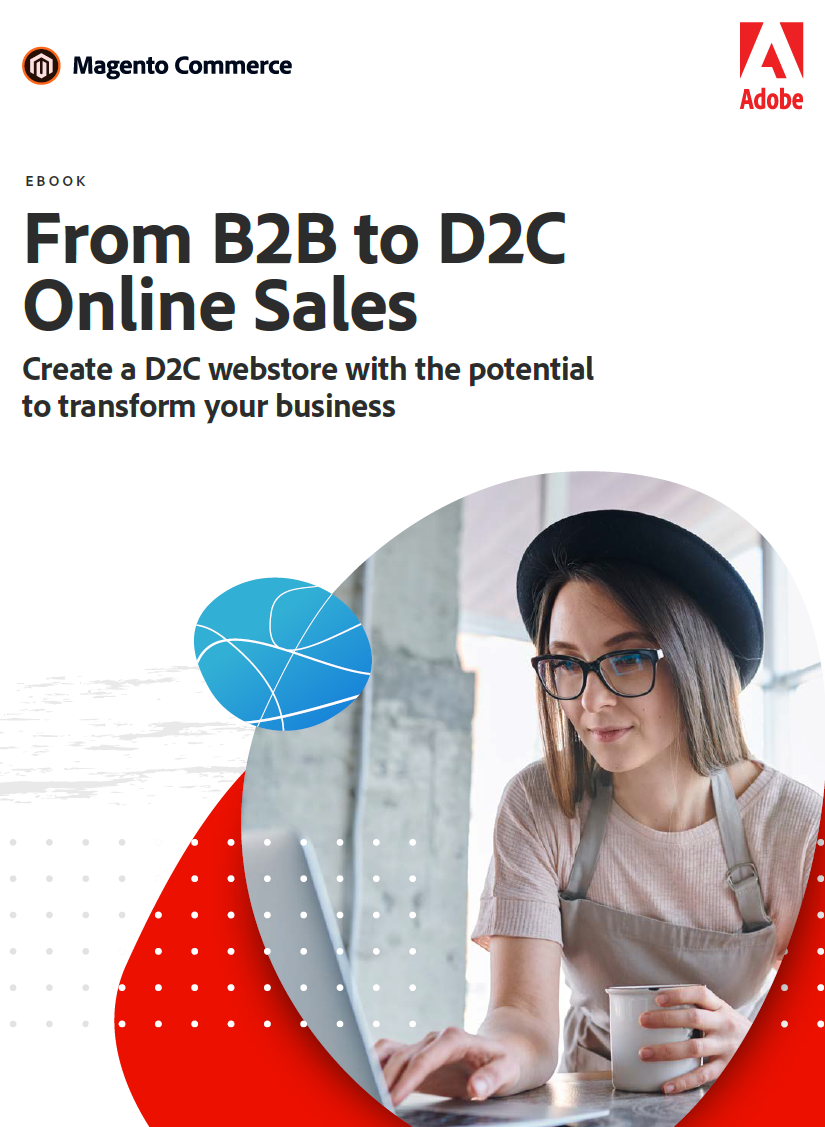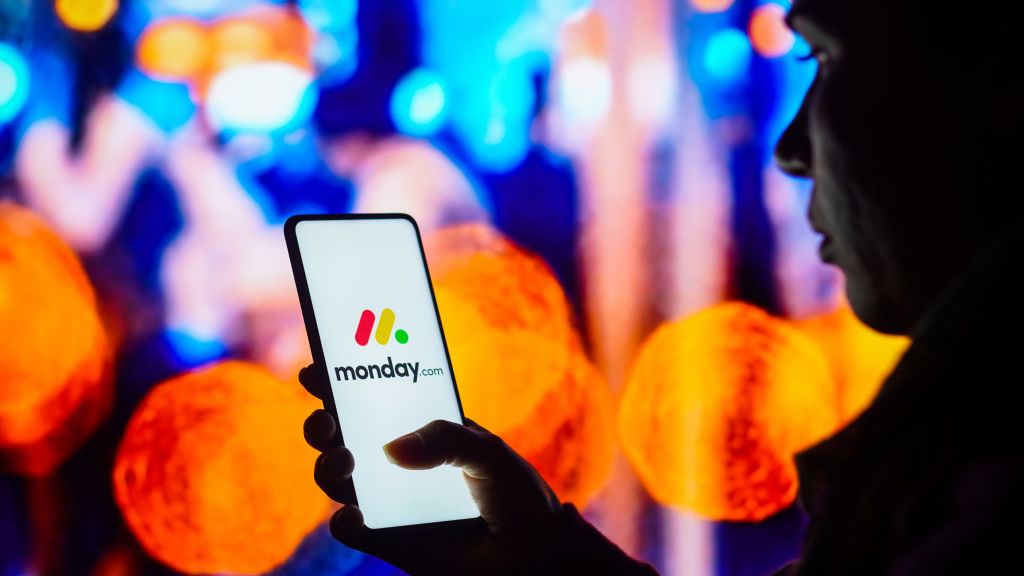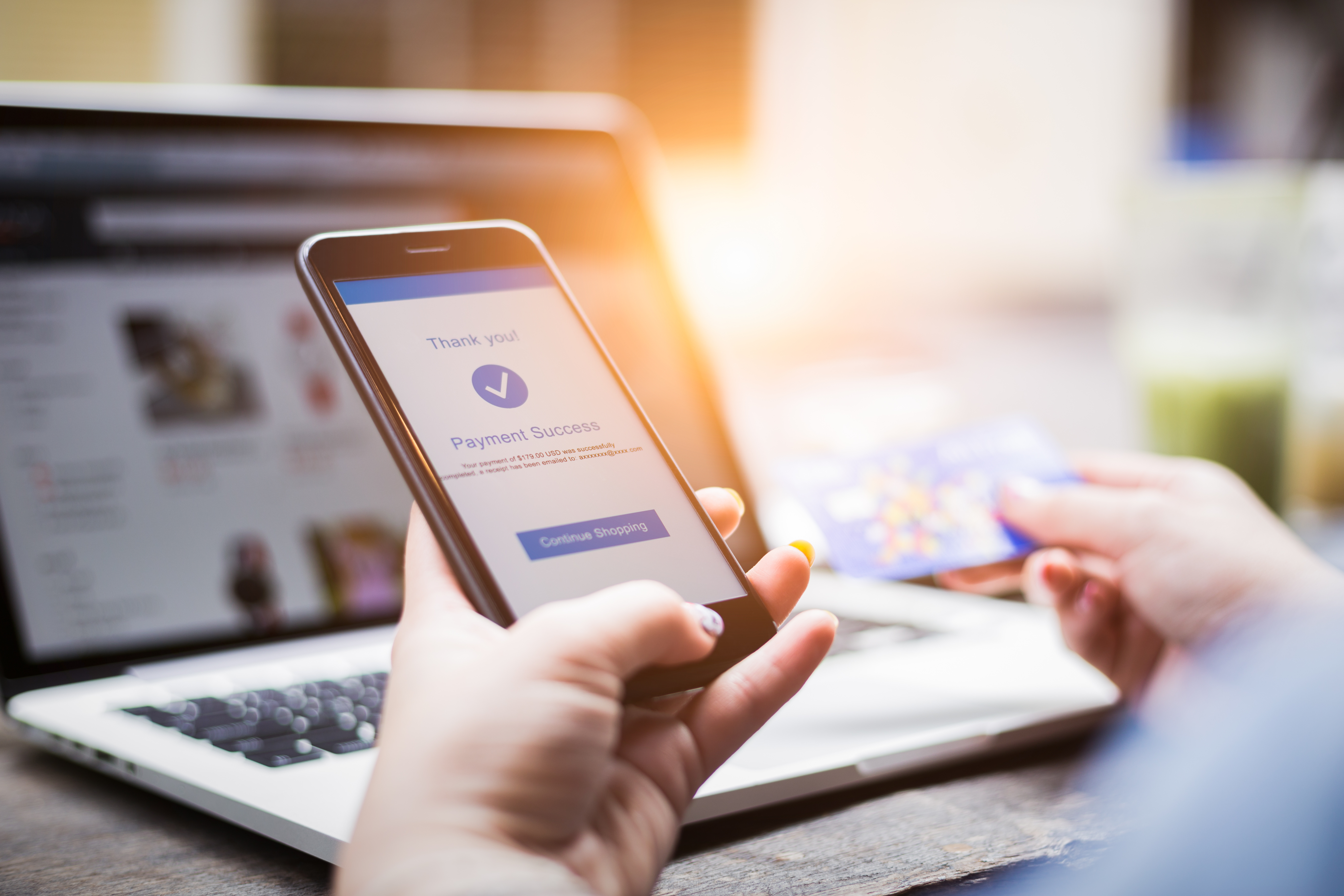What is m-commerce?
Why it’s vital for all companies to have mobile-responsive websites


M-commerce, or mobile commerce, describes the use of mobile phones to make commercial transactions, predominantly smartphones. Today, global mobile traffic to the internet exceeds desktop traffic, making up around 55% of the market according to Broadband Search, compared to 42% by desktops, with the last 3% put down to tablets (in other words, larger mobile devices).
With more people ordering goods online than ever before, the need for businesses to ensure they include an omnichannel experience and ensure their websites are accessible from handheld devices is increasingly important. According to Sales Cycle, 68% of online shopping was done via a mobile device in 2020, with 56% of sales attributed to m-commerce traffic.
With m-commerce covering a number of different transactions, there are plenty of ways for retailers to adopt it into their sales and marketing strategies. This includes mobile payment options, from Apple Pay and Visa Checkout to Android Pay, amongst others, as well as providing consumers with a better customer experience with personalised content and direct shipping methods to anywhere in the world.
The term m-commerce also incorporates the variety of new mobile payment solutions that have emerged, creating “mobile wallets” with the use of fintech, including PayPal and Cash App, enabling one-click payments in stores via a wireless terminal, or mobile point of sale.
Exploiting this avenue may involve updating the features on your website to include optimising the sales process for mobile phones, from a user experience (UX) point of view, with larger buttons, for example. Optimising websites also entails offering customers a seamless and flowing journey, with the capacity to browse and make purchases without encountering any bugs or glitches. The process must involve understanding how people navigate around your site, the journey they take and coming up with ways to improve the overall shopping experience while making purchases through smartphones.
The rise of m-commerce
The concept of using mobiles to shop was first coined as m-commerce in 1997, with its definition stated as, "the delivery of electronic commerce capabilities directly into the consumer's hand, anywhere, via wireless technology", but the use of mobile devices as a way to make smarter purchase decisions and make payments has evolved substantially since then.
RELATED RESOURCE

From B2B to D2C online sales
Create a direct-to-consumer web store with the potential to transform your business
A decade ago, few would have thought that we could pay for products via our smartphones through the use of mobile payments technology, or use apps to order our weekly shopping on the bus home with web speeds nearly as good as our home broadband.
Get the ITPro daily newsletter
Sign up today and you will receive a free copy of our Future Focus 2025 report - the leading guidance on AI, cybersecurity and other IT challenges as per 700+ senior executives
At the start of the year, eMarketer attributed almost 14% of total global retail sales to m-commerce, with nearly 51% of total e-commerce sales via mobile.
"A greater dependence on mobile devices, namely smartphones, is having a positive effect on retail m-commerce sales globally," said Monica Peart, eMarketer's senior forecasting director. "This trend is evident in more frequent mobile shopping sessions and higher spends per session, both hallmarks of a growing expectation for mobile devices to satisfy a variety of consumer shopping needs."
Web-based m-commerce
M-commerce has made it vital for all companies to have mobile-responsive websites that adapt automatically to the size of the screen, allowing mobile experiences to exist alongside a desktop shopping experience.
Smartphones and tablets accounted for 34.5% of online sales in 2017, according to The Circular Board, and that’s predicted to reach 54% by the end of 2021.
App-based m-commerce
More and more these days, retailers rely on mobile apps to reach customers, replicating the experience of being inside their store for people when they're waiting for trains, eating their lunch or at other idle time. Often when a customer visits a retailer's website via their smartphone, the retailer will redirect them to their app store so they can download the app.
Retailers seem to be getting it right: commerce marketing firm Criteo found that mobile apps perform far better than both desktop and mobile websites when it comes to pushing customers to purchase something, boasting a better conversion rate than the others. This reflects the richer and more personalised shopping experience retailers are bringing customers via apps.
M-commerce is definitely a growing part of retail, but it's important that retailers meet and surpass customers' expectations of their digital shopping experiences. This means providing them with a quick responsive interface that is personalised to their tastes, as well as embracing other technology to make it easier to find and pay for products, such as mobile payments while alleviating any security concerns customers may have.
M-commerce during the pandemic
Over the last few years, retailers have worked to expand their mobile presence and this shift was even further accelerated by the COVID-19 pandemic and subsequent lockdown measures.
With the closure of brick and mortar shops and heightened budget consciousness due to the financial crisis, the traditional high street shopping experiences gave way to seemingly endless scrolling. In fact, by April 2020, the average user was spending over a quarter (27%) of their daily waking hours on their mobile device – and what better way to spend that time then by shopping? Only a few months later, mobile analytics company App Annie recorded that UK retail sales made via mobile had increased by 30% since the first quarter of the year, with consumer spending on mobile increasing to in excess of $50 billion (£35 billion) in the first half of 2020.
Last year’s success of m-commerce could also be credited to food delivery apps such as Deliveroo or UberEats, which became a key feature of the lockdown economy as the UK government shut down restaurants and advised consumers to have goods – particularly food – delivered to them at home. This resulted in unprecedented demand for some takeaways, with Domino’s Pizza, for example, being forced to implement a queuing system for its online customers as well as recruit additional delivery drivers.
While the pandemic saw most businesses struggle, m-commerce undeniably thrived in the chaos. This prompted HM Treasury to consider introducing an additional tax for online retailers such as Amazon, in order to help the UK recover from the financial strain of the COVID pandemic.

Clare is the founder of Blue Cactus Digital, a digital marketing company that helps ethical and sustainability-focused businesses grow their customer base.
Prior to becoming a marketer, Clare was a journalist, working at a range of mobile device-focused outlets including Know Your Mobile before moving into freelance life.
As a freelance writer, she drew on her expertise in mobility to write features and guides for ITPro, as well as regularly writing news stories on a wide range of topics.
-
 Bigger salaries, more burnout: Is the CISO role in crisis?
Bigger salaries, more burnout: Is the CISO role in crisis?In-depth CISOs are more stressed than ever before – but why is this and what can be done?
By Kate O'Flaherty Published
-
 Cheap cyber crime kits can be bought on the dark web for less than $25
Cheap cyber crime kits can be bought on the dark web for less than $25News Research from NordVPN shows phishing kits are now widely available on the dark web and via messaging apps like Telegram, and are often selling for less than $25.
By Emma Woollacott Published
-
 Monday.com adds native monetization tool for Work OS, reducing reliance on third-party apps
Monday.com adds native monetization tool for Work OS, reducing reliance on third-party appsNews New capability streamlines the entire payment and billing process, including VAT and currency conversions
By Praharsha Anand Published
-
 Nikulipe: Has COVID democratised online payments?
Nikulipe: Has COVID democratised online payments?Case Studies With more customers forced to buy online, are merchants offering the right ways to pay?
By Elliot Mulley-Goodbarne Published